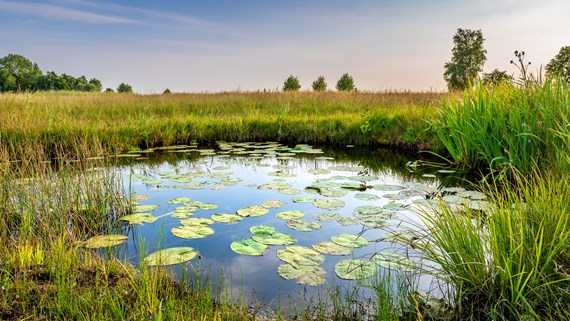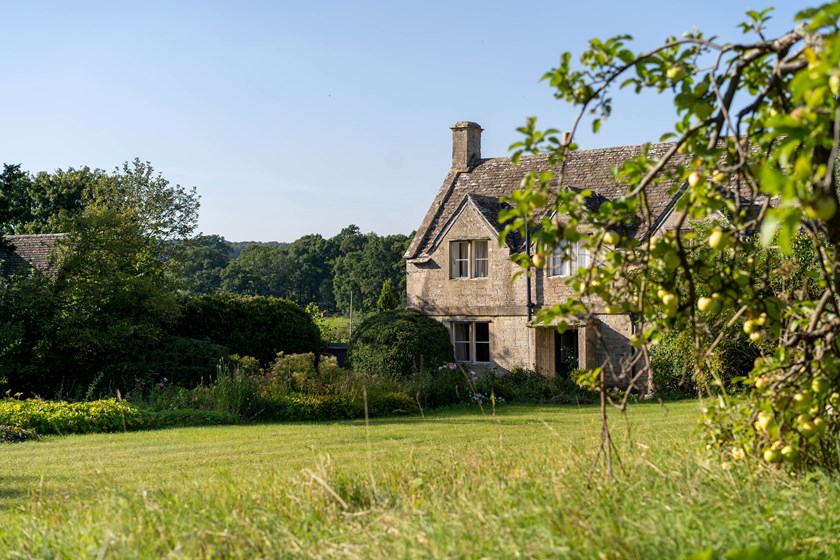Habitat banking: the documents
Insight

Despite some delays in the implementation of Biodiversity Net Gain (BNG), to a degree we have just been waiting for Parliament to catch up with real life. Whether required by local authorities under their planning policies or voluntarily offered by developers, BNG has been with us in embryonic form for some time now – and certainly well before the official 12 February go-live date.
Now, as a result of the Government’s recently published guidance and regulations, the clouds are beginning to part for estates seeking to establish habitat banks with a view to selling offsite biodiversity units to developers who are unable to fulfil BNG requirements on site. Such estates may already have engaged ecologists to carry out a base line habitat survey and will be looking to advance the agreement of a habitat management and monitoring plan (HMMP) with the local planning authority (LPA). The next crucial step will be legally securing the environmental commitments in the HMMP over the required 30-year time span and registering the gain site on the new Biodiversity Gain Site Register operated by Natural England, before sales of biodiversity units can begin. Obviously, following the letter of the regulations is vital to ensure statutory compliance, but on a practical level what are the parties’ “wants” and “needs” likely to be?
Section 106 agreement: what the LPA wants
LPAs are using planning obligations in section 106 agreements as the means to bind the land with positive environmental commitments for 30 years. They are attractive to all parties because they are familiar and this should promote ease of agreement with LPA legal teams. The main obligation in the section 106 agreement will be for the landowner to perform the actions for the creation, management and enhancement of the habitat bank. One area to be agreed with the LPA will be how often the estate must provide progress reports on achieving the HMMP objectives and how the LPA will monitor the environmental enhancement on the site.
The LPA will also expect provisions for the registration of the habitat bank on the Biodiversity Gain Site Register and may look for commitments around the sale of biodiversity units by the landowner to ensure compliance with the statutory scheme introduced by the Environment Act 2021 (for example, the LPA may want obligations on the estate to ensure additionality and avoid double-counting). There are also likely to be requirements regarding the allocation of biodiversity units to particular developments (ie the sales of biodiversity units to developers) which also need recording on the Biodiversity Gain Site Register.
Agreement will need to be reached about the requirements for record keeping by the landowner, including details of the number and nature of the biodiversity units sold and the land in the habitat bank to which they are attributable, as well as the conditions on which such records will be made available to the LPA. As ever, there will be discussions about the LPA’s costs in connection with the project.
Section 106 agreement: what the landowner wants
As few obligations and as little interference as possible! Whilst it is reasonable for the LPA to expect provisions obliging the landowner to comply with the HMMP, the landowner will want to be sure that its obligations in this respect are not unduly onerous. One aspect of this is to ensure that the landowner’s obligations in the HMMP focus on carrying out management actions that promote biodiversity, rather than obliging them to guarantee the delivery of measurable targets: actions, not outcomes. Nature is by definition wildly unpredictable and landowners must ensure that they are not accountable for failures to meet environmental aims caused by flood, pestilence, extreme weather events and other acts of chance beyond the landowner’s control.
As with any section 106 agreement, a landowner will want to think carefully about what sort of enforcement mechanisms it can accept, to ensure that these put the landowner in the driving seat for any required remedial measures and limit interference from the LPA.
Whilst accepting some element of reporting to the LPA, landowners will want to preserve their autonomy and discretion in terms of the sale of biodiversity units in the open market, including their ability to stack multiple natural capital offsets onto the same area of land based on additional environmental enhancement.
It is prudent for landowners to hedge against the risk that the expected market in biodiversity units does not take off as is hoped. Is there a mechanism either for bringing the habitat bank land within the 30-year commitment in phases on notice from the landowner or (in the alternative or additionally) a means to remove land from the commitments where biodiversity units are never sold in relation to a particular tranche of the proposed habitat bank?
The sale documents
The other side of the coin is, of course, the sale of biodiversity units to the developers to provide the 10 per cent biodiversity net gain they need to enable their developments. Developers will wish to assure themselves that the underlying section 106 agreement is robust and that the habitat bank is properly registered as a biodiversity gain site. The way should then be open for estates to sell and allocate the biodiversity units to particular developments.
Having established the number and type of biodiversity units required and agreed a price, there may be some direct sales of biodiversity units to developers. However, many developers will seek an option agreement to give them an agreed period of certainty and exclusivity (for a fee) over an agreed number of units, often to mirror the option they will have over the development land itself. The option will set the number (and nature) of the biodiversity units for sale and fix the price (most likely subject to indexation from the heads of terms date). When the purchase is called for by the service of an option notice, the parties then complete the sale deed itself, which will allocate the agreed number of biodiversity units to the development in return for the payment of the sale price. Government guidance is clear that VAT is payable on the sale of biodiversity units and the sale deed will deal with this too.
The sale deed will contain provision for who is then responsible for recording the allocation in the Biodiversity Gain Site Register. The parties will wish to consider how they act together and share information to facilitate that registration and what occurs if the application encounters difficulties or must be appealed.
Developers need to ensure that the documentation gives them what they need to procure sign-off by the LPA of their biodiversity gain plan for the development, but landowners must take care that their obligations to the developer are clearly limited and, in particular, include no contractual obligations to the developer with regard to compliance with the HMMP or the ongoing management, monitoring or enhancement of the habitat bank.
To conclude, we are just at the beginning. The BNG market is in its infancy and the drafting of documentation to underpin it is emergent. Exciting times for land lawyers!
This article is part of the Rural Estates Newsletter 2024, click here to read.
This publication is a general summary of the law. It should not replace legal advice tailored to your specific circumstances.
© Farrer & Co LLP, February 2024







